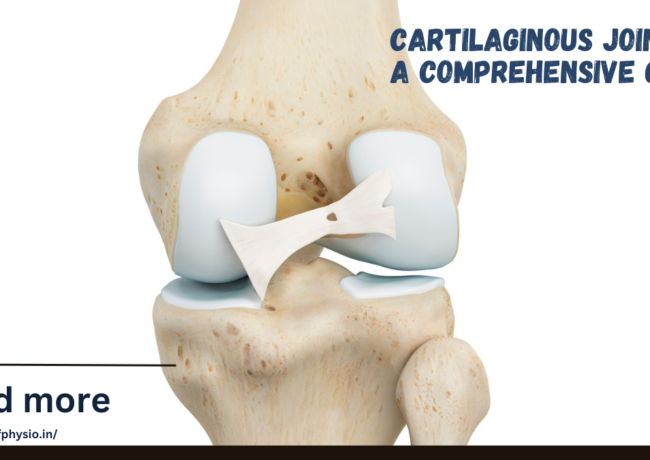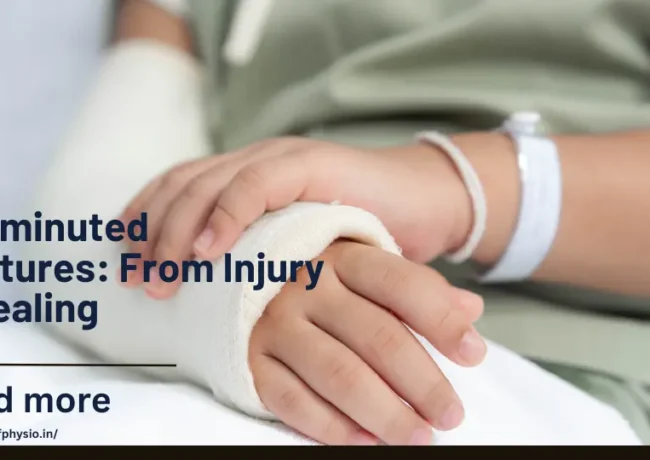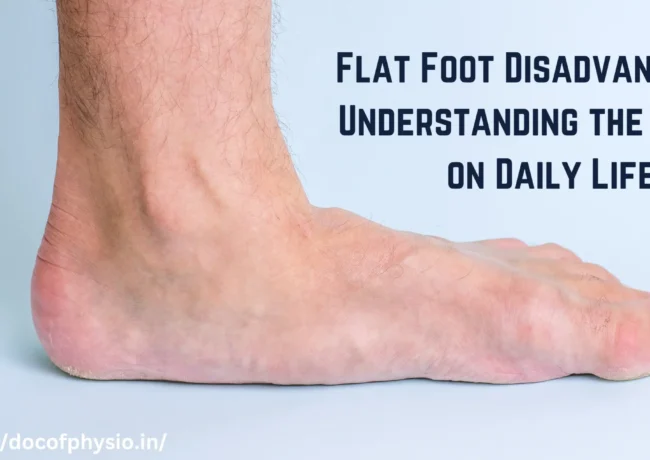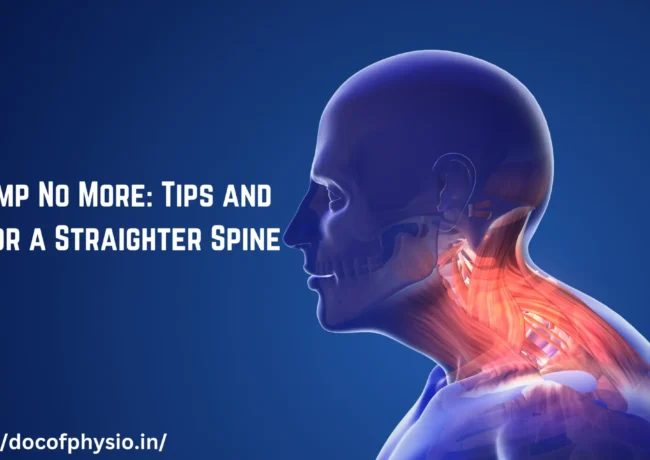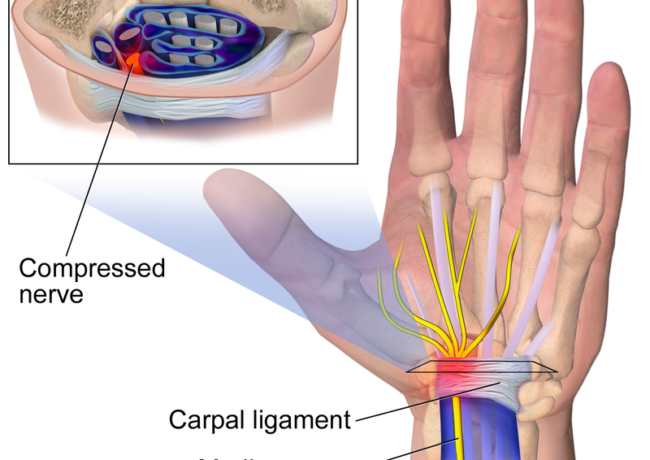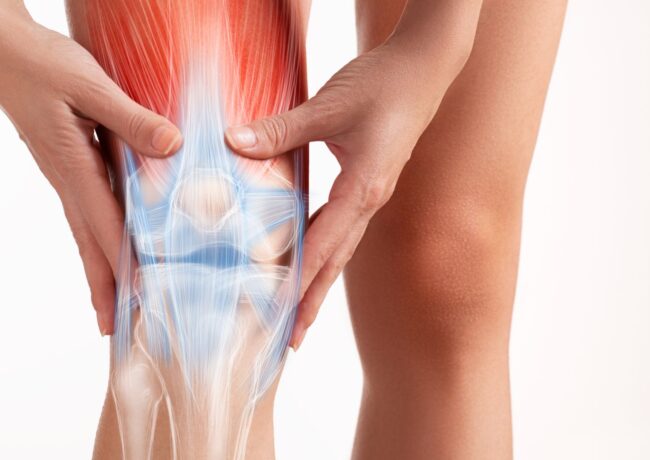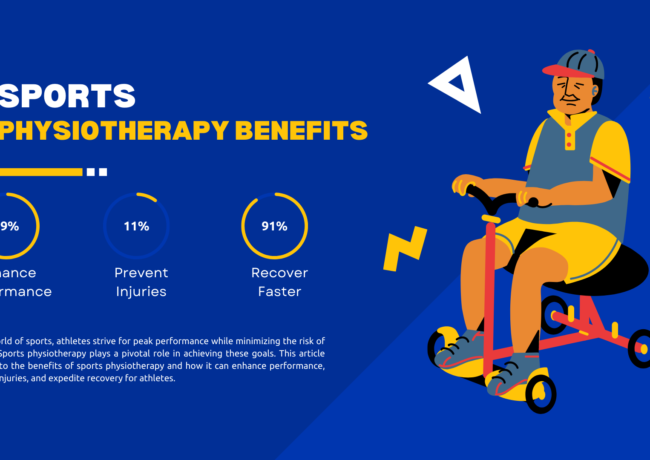
Comminuted Fractures: From Injury to Healing
- May 04, 2024
- by
- Dr. Rajnandini Dubey
Comminuted fractures are a type of bone fracture characterized by the bone breaking into multiple fragments or pieces. Unlike simple fractures, where the bone breaks cleanly into two pieces, comminuted fractures involve the bone shattering into three or more fragments. This results in a more complex and fragmented break.|
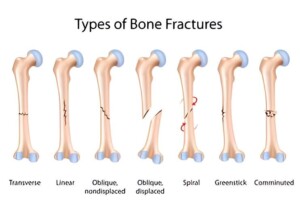
The complexity of comminuted fractures compared to other types of fractures
Comminuted fractures present a higher degree of complexity compared to other types of fractures due to several factors:
Fragmentation:
Unlike simple fractures, where the bone breaks cleanly into two pieces, comminuted fractures involve the bone shattering into three or more fragments. This fragmentation complicates the alignment and stabilization of the fractured bone pieces.
Soft Tissue Damage:
The extensive fragmentation in comminuted fractures often leads to significant damage to the surrounding soft tissues, including muscles, tendons, and ligaments. This can result in increased pain, swelling, and risk of complications such as infection or delayed healing.
Treatment Challenges:
Because of the complex nature of comminuted fractures, they pose challenges for treatment and may require more extensive surgical interventions. Surgical procedures such as open reduction and internal fixation (ORIF) may be necessary to realign the bone fragments and stabilize the fracture using plates, screws, or rods.
Risk of Complications:
Comminuted fractures are associated with a higher risk of complications compared to simpler fractures. These may include nonunion (failure of the bone fragments to heal together), malunion (incorrect alignment of the fractured bone), or avascular necrosis (loss of blood supply to the fractured bone fragments).
Extended recovery time:
Due to the severity of comminuted fractures and the potential for complications, the recovery process is often longer and more challenging compared to simpler fractures. To regain strength, function, and mobility, patients might need to undergo prolonged immobilization followed by intensive rehabilitation.
Journey from injury to healing for comminuted fractures
1. Initial Assessment and Diagnosis:
The journey begins with the assessment and diagnosis of the comminuted fracture. This involves medical evaluation, imaging tests (such as X-rays or CT scans), and possibly additional diagnostic procedures to determine the extent of the fracture and any associated injuries.
2. Surgical Intervention (if necessary):
In cases where the comminuted fracture is severe or unstable, surgical intervention may be required to realign the bone fragments and stabilize the fracture. This phase of the journey involves undergoing surgery, followed by a period of post-operative care and monitoring.
3. Immediate Post-Injury Phase:
Following surgery or initial treatment, patients enter the immediate post-injury phase, characterized by pain management, immobilization of the affected limb, and monitoring for signs of complications such as infection or compartment syndrome.
4. Rehabilitation and Physiotherapy:
As the initial healing process begins, patients transition to the rehabilitation phase, which often includes physiotherapy to restore mobility, strength, and function. Physiotherapy exercises and techniques are tailored to the individual’s specific needs and may involve gradually increasing intensity and complexity as healing progresses.
5. Monitoring and Follow-Up:
Throughout the healing process, patients undergo regular monitoring and follow-up appointments with their healthcare providers to assess progress, address any concerns or complications, and make adjustments to the treatment plan as needed.
6. Gradual Return to Activities:
As healing continues and strength and mobility improve, patients gradually reintegrate into their daily activities and may resume normal physical functions, work, and recreational pursuits.
7. Long-Term Management:
Even after the fracture has healed, patients may require ongoing monitoring and management to prevent complications, maintain mobility and function, and address any long-term effects of the injury, such as stiffness or joint instability.
How do comminuted fractures occur?
Comminuted fractures occur as a result of high-impact trauma or force applied to the bone. Some common causes of comminuted fractures include:
1. Motor Vehicle Accidents:
High-speed collisions or accidents involving vehicles can exert significant force on the body, leading to comminuted fractures, particularly in areas like the femur, pelvis, or skull.
2. Falls from Heigh:
Falls from a significant height, such as a ladder or scaffold, can result in comminuted fractures, especially in the limbs or spine, due to the impact with the ground or other surfaces.
3. Sports Injuries:
Participation in contact sports or activities with a high risk of falls or collisions can increase the likelihood of sustaining a comminuted fracture. Sports such as football, rugby, or skiing may pose a particular risk.
4. Direct Blows or Trauma:
Direct blows to the body from objects or blunt force trauma, such as those experienced in assaults or industrial accidents, can cause comminuted fractures in the affected area.
5. Osteoporosis:
Individuals with weakened bones due to conditions like osteoporosis are more susceptible to fractures, including comminuted fractures, even with minor trauma or falls.
6. Pathological Conditions:
Certain medical conditions or diseases that weaken the bones, such as bone cancer or osteogenesis imperfecta (brittle bone disease), can predispose individuals to comminuted fractures with minimal trauma.
Diagnosis and Assessment
The diagnosis of comminuted fractures typically involves a combination of clinical evaluation and imaging tests. During the initial assessment, a healthcare provider will perform a physical examination to assess the affected area for signs of tenderness, swelling, or deformity. Imaging tests, such as X-rays and CT scans, are then used to confirm the diagnosis and assess the extent of the fracture. X-rays provide detailed images of the bone and can identify the presence of multiple fragments or displaced bone pieces. CT scans offer more detailed imaging and three-dimensional views of the fracture, helping healthcare providers plan treatment more effectively.
Treatment
Treatment options for comminuted fractures depend on a variety of factors, including the severity of the injury, the patient’s overall health, and their individual needs. In some cases, conservative management may be sufficient, which involves immobilizing the affected limb with a cast or splint to allow the bone to heal naturally over time. However, in more severe cases or when there is significant displacement of bone fragments, surgical intervention may be necessary.
Surgery may include open reduction and internal fixation (ORIF), where the bone fragments are realigned and stabilized using screws, plates, or rods.
Physiotherapy rehabilitation for comminuted fractures
Physiotherapy plays an important role in the rehabilitation process for individuals with comminuted fractures. Its purpose is to optimize recovery after injury, restore function, and reduce disability.
Goals of Physiotherapy Rehabilitation
The primary goals of physiotherapy rehabilitation for comminuted fractures include:
1. Pain Management:
Physiotherapists employ various modalities and techniques to alleviate pain and discomfort associated with the fracture, such as manual therapy, soft tissue mobilization, and therapeutic exercises.
2. Restoration of Mobility:
Physiotherapy interventions focus on restoring joint mobility, range of motion, and flexibility in the affected limb. This may involve gentle stretching exercises, passive and active range of motion exercises, and joint mobilizations.
3. Improvement of Strength and Function:
Physiotherapists design personalized exercise programs to strengthen the muscles surrounding the fracture site and improve overall functional capacity. These exercises may include resistance training, weight-bearing activities, and functional movements tailored to the individual’s specific needs and abilities.
4. Prevention of Secondary Complications:
Physiotherapy aims to prevent secondary complications associated with immobilization, such as muscle weakness, joint stiffness, and loss of bone density. Through targeted interventions, physiotherapists help mitigate these risks and promote optimal recovery.
Techniques and Interventions
Physiotherapy rehabilitation for comminuted fractures may involve the following techniques and interventions:
1. Manual Therapy:
Hands-on techniques, such as massage, joint mobilization, and manipulation, are used to reduce pain, improve joint mobility, and facilitate tissue healing.
2. Therapeutic Exercises:
Customized exercise programs are prescribed to address specific impairments and functional limitations associated with the fracture. These exercises may focus on strengthening weak muscles, improving balance and coordination, and enhancing overall physical function.
3. Modalities:
Modalities such as heat therapy, cold therapy, ultrasound, and electrical stimulation may be utilized to complement other treatment approaches and facilitate pain relief, tissue healing, and recovery.
4. Functional Training:
Functional training involves practicing activities of daily living and functional movements relevant to the individual’s lifestyle and goals. This helps patients regain independence and confidence in performing everyday tasks post-injury.
5. Education and Self-Management:
Physiotherapists provide education and guidance on proper body mechanics, activity modification, and self-management strategies to empower patients in their recovery journey and prevent future injuries.
Benefits of Physiotherapy Rehabilitation
Physiotherapy rehabilitation offers several benefits for individuals recovering from comminuted fractures, including:
– Reduced Pain and Discomfort: Physiotherapy interventions help alleviate pain and discomfort associated with the fracture, promoting a more comfortable recovery experience.
– Improved Mobility and Function: By restoring joint mobility, muscle strength, and functional capacity, physiotherapy enables individuals to regain independence and mobility in their daily activities.
– Faster Recovery: Physiotherapy interventions accelerate the healing process and facilitate a quicker return to pre-injury levels of function and activity.
– Prevention of Complications: Physiotherapy helps mitigate the risk of secondary complications such as muscle atrophy, joint stiffness, and decreased bone density, promoting optimal recovery outcomes.
– Enhanced Quality of Life: Through targeted interventions and personalized care, physiotherapy enhances the overall quality of life for individuals recovering from comminuted fractures, enabling them to resume their normal activities and participate fully in life.
FAQs
Q.1 Why do comminuted fractures take longer to heal?
Comminuted fractures involve multiple broken bone pieces, making it harder for the body to bridge the gaps and rebuild the bone structure. Healing takes time for the fragments to realign and fuse properly.
Q2. Who is most likely to get a comminuted fracture?
People with weaker bones (osteoporosis) or those experiencing high-impact trauma (falls, car accidents) are more susceptible.
Q3.Is a comminuted fracture always open (broken skin)?
No, a comminuted fracture can be closed (skin intact) or open (bone protrudes through skin).
Q4.कम्यूटेड फ्रैक्चर को ठीक होने में अधिक समय क्यों लगता है? (Why do comminuted fractures take longer to heal?)
कम्यूटेड फ्रैक्चर में टूटी हुई हड्डी कई टुकड़ों में बंट जाती है, जिससे शरीर के लिए टुकड़ों को जोड़ना और हड्डी की संरचना को फिर से बनाना कठिन हो जाता है। टुकड़ों को ठीक से जुड़ने और फ्यूज होने में समय लगता है।
Q5.How painful is a comminuted fracture?
Comminuted fractures can be very painful due to the bone fragments pressing on nerves and surrounding tissues.
Q6.Can a comminuted fracture be reduced (realigned)?
Yes, often surgery is needed to reposition the bone fragments (reduction) and promote healing. Implants like plates and screws might be used for stability.
Q7.What antibiotic is used for a comminuted fracture?
Antibiotics are not routinely used for fractures unless there’s an open wound (infection risk). Your doctor will determine if antibiotics are necessary.
Q8.How to diagnose a comminuted fracture?
Doctors use X-rays, CT scans, or MRIs to visualize the broken bone and determine the fracture pattern.
Q9.What is the opposite of a comminuted fracture?
A simple fracture describes a clean break in one place.
Q10.Is a comminuted fracture unstable?
Comminuted fractures can be unstable due to the multiple fragments, potentially causing further displacement.
Q11.What is the mechanism of injury in a comminuted fracture?
High-force impacts like car accidents or falls with significant force can cause a bone to shatter into multiple pieces.
Q12.What happens if a comminuted fracture is left untreated?
Untreated fractures can lead to bone deformity, chronic pain, and mobility issues. Early diagnosis and treatment are crucial for optimal healing.






